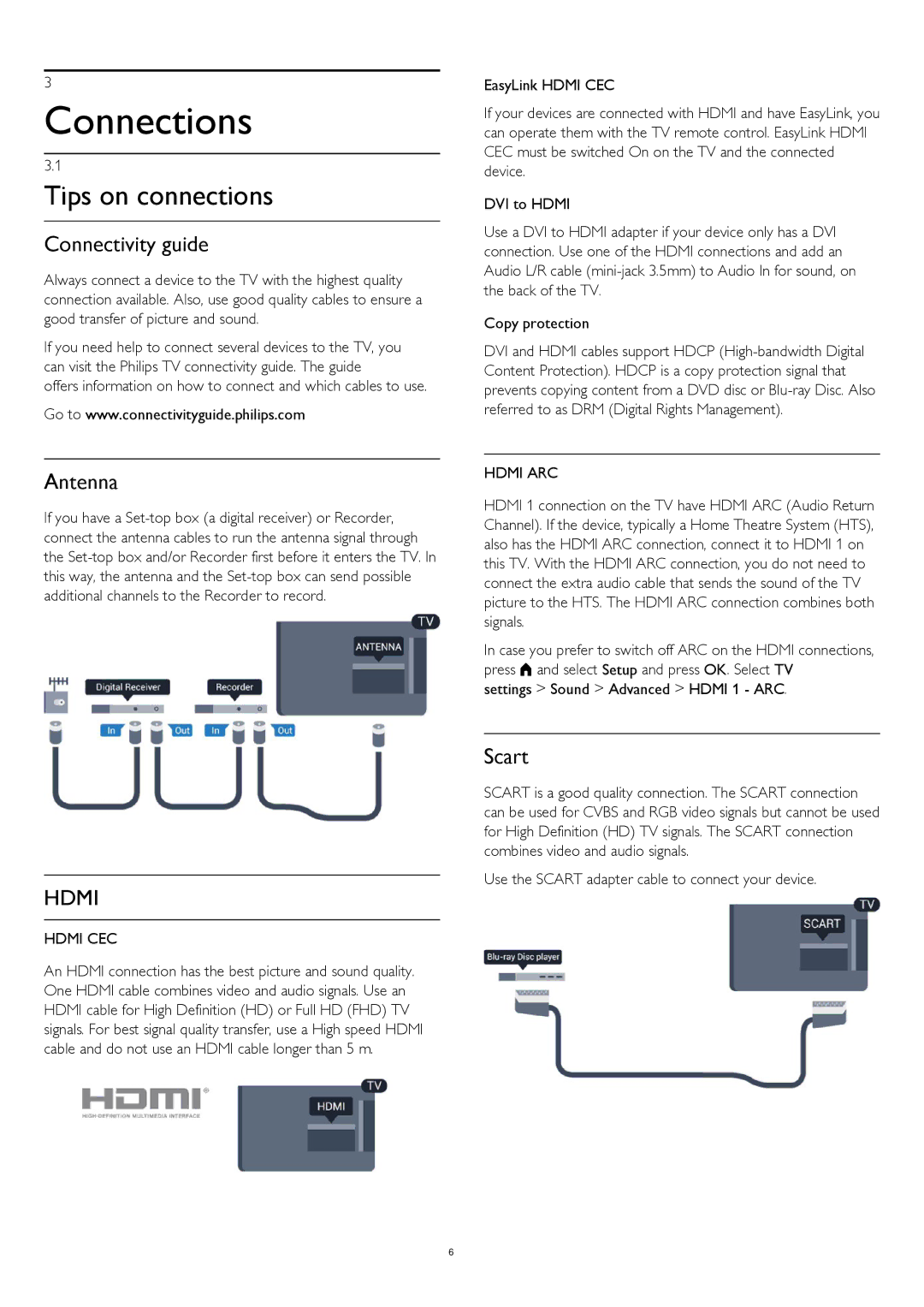
3
Connections
3.1
Tips on connections
Connectivity guide
Always connect a device to the TV with the highest quality connection available. Also, use good quality cables to ensure a good transfer of picture and sound.
If you need help to connect several devices to the TV, you can visit the Philips TV connectivity guide. The guide
offers information on how to connect and which cables to use.
Go to www.connectivityguide.philips.com
Antenna
If you have a
HDMI
HDMI CEC
An HDMI connection has the best picture and sound quality. One HDMI cable combines video and audio signals. Use an HDMI cable for High Definition (HD) or Full HD (FHD) TV signals. For best signal quality transfer, use a High speed HDMI cable and do not use an HDMI cable longer than 5 m.
6
EasyLink HDMI CEC
If your devices are connected with HDMI and have EasyLink, you can operate them with the TV remote control. EasyLink HDMI CEC must be switched On on the TV and the connected device.
DVI to HDMI
Use a DVI to HDMI adapter if your device only has a DVI connection. Use one of the HDMI connections and add an Audio L/R cable
Copy protection
DVI and HDMI cables support HDCP
HDMI ARC
HDMI 1 connection on the TV have HDMI ARC (Audio Return Channel). If the device, typically a Home Theatre System (HTS), also has the HDMI ARC connection, connect it to HDMI 1 on this TV. With the HDMI ARC connection, you do not need to connect the extra audio cable that sends the sound of the TV picture to the HTS. The HDMI ARC connection combines both signals.
In case you prefer to switch off ARC on the HDMI connections, press and select Setup and press OK. Select TV
settings > Sound > Advanced > HDMI 1 - ARC.
Scart
SCART is a good quality connection. The SCART connection can be used for CVBS and RGB video signals but cannot be used for High Definition (HD) TV signals. The SCART connection combines video and audio signals.
Use the SCART adapter cable to connect your device.
